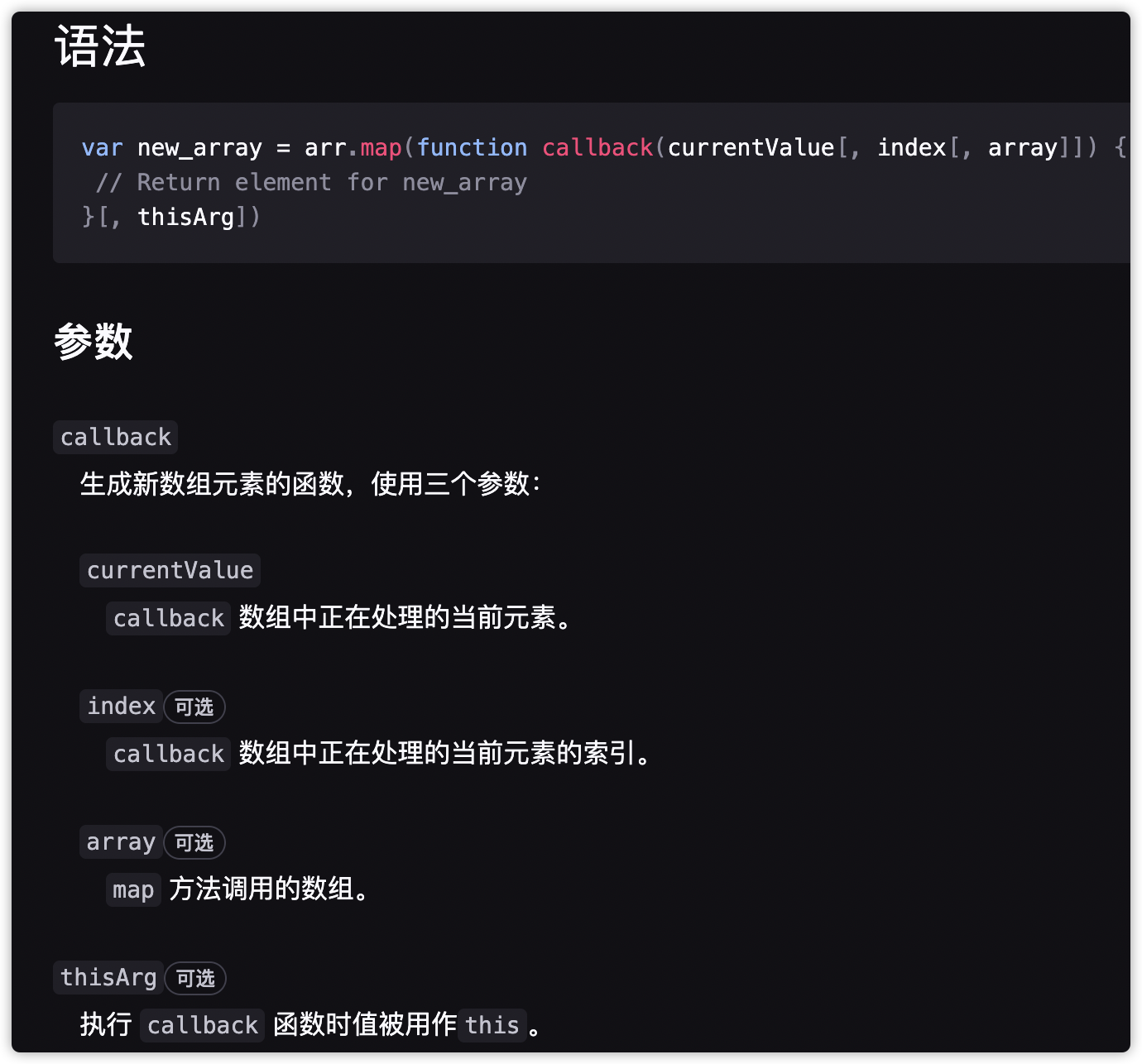不管对数组方法有多熟悉,强烈建议完整看一遍MDN文档(包括所有的示例)
我们从输入输出看这些数组方法其实都比较容易手写实现出来
感觉考察更多的是对数组方法所有参数的了解程度,毕竟有些参数是真的不怎么用,但是能用上时又特别好用
以及对不同数组方法应用场景的熟悉
map
map只接收一个回调函数 重点是回调函数接收3个参数

js
function myMap(arr, cb) {
let newArr = []
for(let i=0; i < arr.length; i++) {
const res = cb(arr[i], i, arr)
newArr.push(res)
}
return newArr
}js
Array.prototype.myMap(cb) {
let newArr = []
for(let i=0; i < this.length; i++) {
const res = cb(this[i], i, this)
newArr.push(res)
}
return newArr
}filter
和
map很相似,filter是回调函数为true的项进入新数组
js
function myFilter(arr, cb) {
const newArr = []
for(let i=0; i < this.length; i++) {
const res = cb(this[i], i, this)
if(res) {
newArr.push(arr[i])
}
}
return newArr
}js
Array.prototype.myMap(cb) {
const newArr = []
for(let i=0; i < this.length; i++) {
const res = cb(this[i], i, this)
if(res) {
newArr.push(arr[i])
}
}
return newArr
}reduce
同样手写
reduce并不难,考察的更多的是对reduce的所有参数了解和使用reduce的场景在MDN文档上,列出了很多
reduce的示例,这些都是有实际应用场景而且典型的例子
如👇 遍历1次无法满足需求而需要遍历多次时,可以考虑reduce是否适用
js
// Array.map 和 Array.filter 组合
console.log(
arrTest
.filter(item => item.type === "a")
.map(item => item.add = '1')
)👆 这也是reduce-mdn文档上说的例子
使用
.reduce()替换.filter().map()使用
Array.filter()和Array.map()会遍历数组两次,而使用具有相同效果的Array.reduce()只需要遍历一次,这样做更加高效。(如果你喜欢for循环,你可用使用Array.forEach()以在一次遍历中实现过滤和映射数组)
关于promise与循环的故事,我们会另外专门讲TODO:
关于管道函数我们在vue的过滤器中讲到过
👇 开始手写实现reduce
js
function reduce(arr, cb, initVal) {
// 1. 没有初始值时取数组第1项为初始值
let res = initVal === undefined ? arr[0]: initVal;
// 2. 没有初始值时index为第2项 即1
let i = initVal == undefined? 1: 0
// 3. 遍历触发传入的回调函数
for (i; i< arr.length; i++){
num = cb(res, arr[i], i)
}
return res
}js
Array.prototype.myReduce = function(cb, initVal) {
// 1. 没有初始值时取数组第1项为初始值
let res = initVal === undefined ? arr[0]: initVal;
// 2. 没有初始值时index为第2项 即1
let i = initVal == undefined? 1: 0
// 3. 遍历触发传入的回调函数
for (i; i< arr.length; i++){
num = this(res, arr[i], i)
}
return res
}